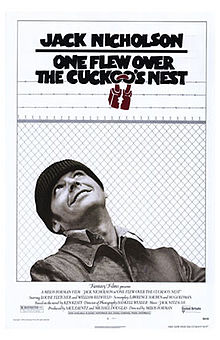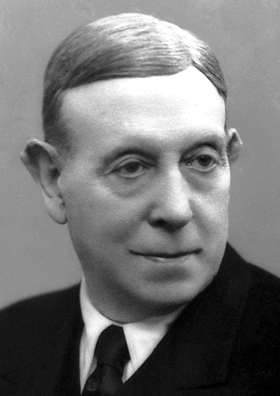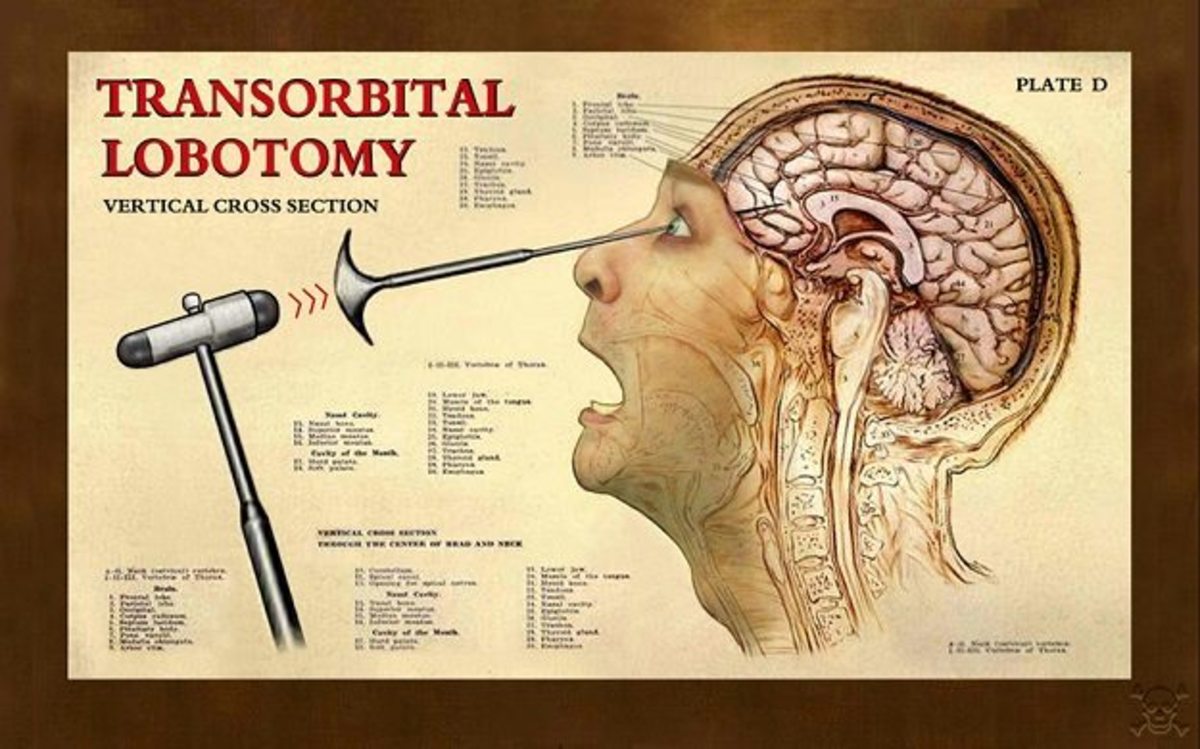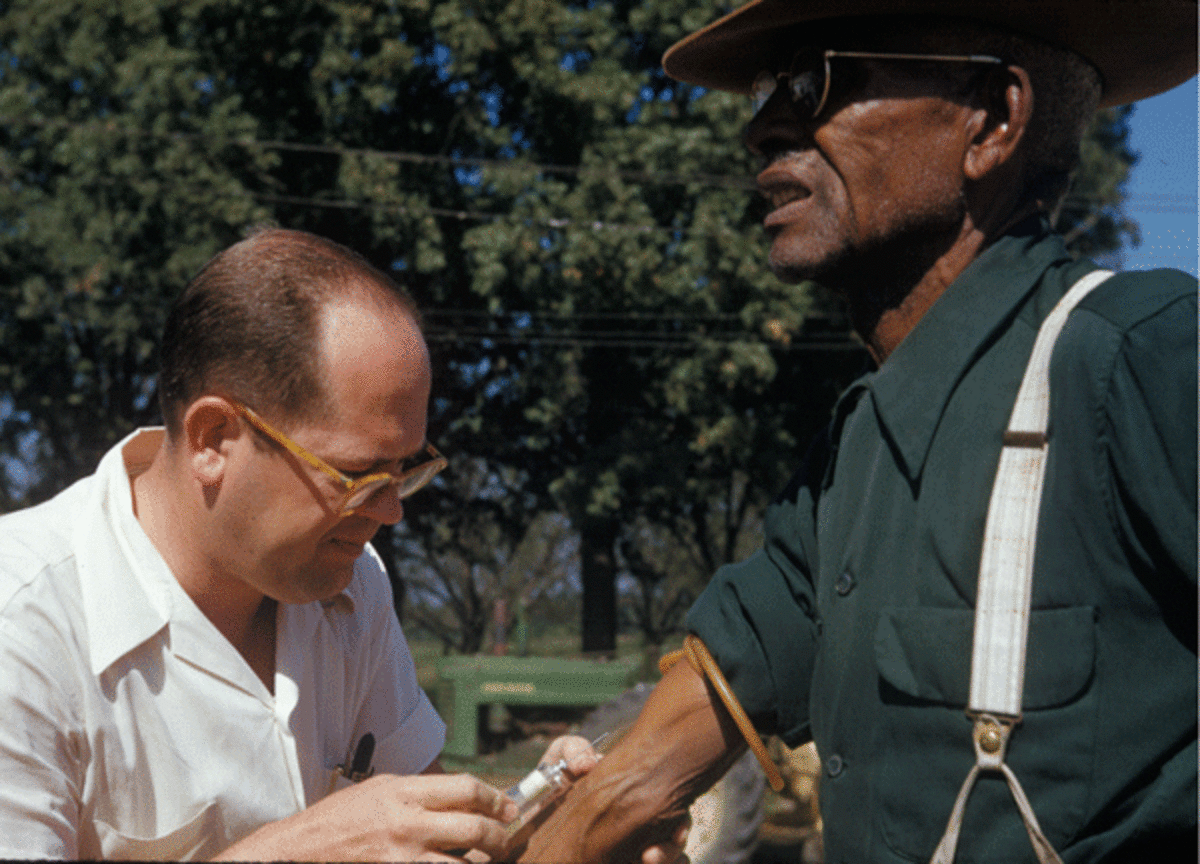The Lobotomy Nobel


A Nobel Prize for Human Rights Abuse?
One of the saddest chapters in the history of science is of the Lobotomy Nobel of 1949. However most people in the 21st Century have not heard about it. That's unfortunate. As the old saying goes, those who don't learn the lessons of history are doomed to repeat them. Here's how the Lobotomy Nobel came to pass.
Schizophrenics comprise approximately 1% of the world's population. Up until the second half of the 20th Century, there was precious little that physicians could do to help people with schizophrenia. In the wealthier countries, warehousing was viewed as the primary modality. And the insane asylums of the time, which have been described as 'snake pits', were a drain on limited public health resources. At best, these institutions prevented schizophrenics from inadvertently harming themselves, and from offending the sensibilities of the general public.
In the late 1940s, Europe was rebuilding from World War II. First-rate unlimited institutional care for all mentally ill people was not feasible. At the time, physicians were experimenting with drastic measures, like electro-convulsive therapy. The results from these experiments were mixed.
That was the historical backdrop for the pioneering 'research' on lobotomies, by Portuguese physician Antonio Egas Moniz, starting in the mid-1930s. The medical profession duly noted the increased tractability of Dr. Moniz' 'patients'. But what about their quality of life? Here is Norbert Wiener's trenchant 1948 comment about lobotomy:
"[P]refrontal lobotomy... has recently been having a certain vogue, probably not unconnected with the fact that it makes the custodial care of many patients easier. Let me remark in passing that killing them makes their custodial care still easier."
Wiener's comment is not a stretch. Killing and lobotomizing are quantitatively different, but qualitatively similar. The brain is the seat of human consciousness. Surgically removing part of a patient's brain without informed consent is the same as killing a part of who that person is.
Sometimes art can help us get a handle on difficult ethical questions. The must-see movie from 1975, One Flew Over the Cuckoos Nest, adapted from Ken Kesey's novel, came to grips with the issue of lobotomy in a poignant way. The film won five Oscars, including Best Actor and Best Actress, for Jack Nicholson and Louise Fletcher, respectively.
Surprisingly, many people who rented the movie in recent years did not notice the lobotomy scar on McMurphy's forehead, and attribute his vegetative state to an overdose of shock therapy. Did the DVD version censor out that part?
Speaking of official recognition, Dr. Moniz shared the Nobel Prize in Physiology or Medicine, for his pioneering work on "prefrontal leucotomies" in 1949.
How do you feel about the Nobel Prizes?


After the Nobel
Moniz' Nobel further legitimized lobotomies, and tens of thousands of these were performed over the next few years. And not just for psychotics. Some patients with severe headaches also received lobotomies. John F. Kennedy's sister, Rosemary, was one of many people who suffered long-term incapacitation from this 'medical procedure'.
Dr. Walter Freeman--a neurologist and psychiatrist, but not a surgeon--performed more than 2000 lobotomies in the U.S. In some cases, he used an ice pick, to yield what he felt was the optimal amount of neural damage. Despite Freeman's political connections within his profession, his license to practice medicine was eventually revoked.
In the 1950s, Thorazine and other medications, which proved to be partially effective in treating schizophrenia, were introduced. Only then, did people began to ask the obvious question about lobotomies:
Hey, wait a minute! Aren't we talking about major human rights violations here?
Indubitably. In the first place, schizophrenics do not always share our version of reality; so it's difficult to get meaningful informed consent from them.
Second, the United Nations published the Universal Declaration of Human Rights in 1948, the year before the Lobotomy Nobel. These two items should apply to issues of bodily integrity, like lobotomy:
Article 3: Everyone has the right to life, liberty and security of person.
Article 5: No one shall be subjected to torture or to cruel, inhuman or degrading treatment or punishment.
Moreover revelations about the monstrous 'medical experiments' carried out by the Germans and Japanese during World War II were still fresh in the minds of people throughout the Free World, including Sweden. Were the Nobel Committee members living in caves?
Another question: Do the surviving lobotomy victims and their families have recourse to medical malpractice lawsuits? I'm not a lawyer. However my understanding is that under laws in the U.S., nonstandard treatment by a physician is part of the definition of malpractice. In the early 1950s, lobotomy was regarded as a legitimate medical treatment--in part because of Moniz' Nobel Prize. Existing law shielded the physicians who performed lobotomies from malpractice litigation. Suing the b@st@rds was never an option.
A few years ago, the families of some lobotomy victims asked the Nobel Committee to revoke Moniz' Nobel Prize posthumously. The Committee's response was essentially: No can do. Both points of view have merit. Rescinding that particular Nobel could bring some closure to the families. On the other hand, the Committee members could take the position that the Lobotomy Nobel did not happen on their watch, and that they are not empowered to cancel previous Nobels anyway.
This was not the only controversial Nobel Prize, and there will probably be a few more. Palestinian terrorist Yasser Arafat did share a Nobel Peace Prize in 1994. However there has always been more guess-work and more subjectivity involved in awarding the Peace Prize, as compared with the science-related Nobels.
The Nobel Prize for Physiology or Medicine should be based upon scientific research conducted in an ethical fashion. The lobotomy research done in the 1930s and 1940s was junk science. Why? First, because informed consent is an essential part of legitimate medical research on humans. And Moniz did not get informed consent from his human guinea pigs.
Second, Lobotomy was a fad within the medical community. The whole enterprise was based upon a questionable article of faith that was not adequately tested; to wit: A docile lobotomized mental patient has better quality of life than a rambunctious whole-brain mental patient.
*sarcasm on* In retrospect, I can think of a good follow-up experiment, with a sample size of one. It's obvious to me that Walter Freeman was not playing with a full deck--at least in an ethical sense. However he was reasonably lucid when he wasn't mucking around in other people's brains. He would have been the ideal candidate for a highly personal voyage of discovery into the wonderful world of surgically-induced brain damage.
In 1951, a team of Freeman's fellow physicians could have kidnapped him, anesthetized him, lobotomized him, and then one year after the surgery, given him a detailed questionnaire about his quality of life. Of course, I'm assuming that his language skills, memory, and self-awareness would have been sufficient to answer the questions. Considering the number of human brains that Freeman had damaged by then, it would have been a small price to pay, in order to test the Lobotomy Hypothesis. Then a grunting, drooling Freeman could have been awarded a Nobel Prize for his invaluable contribution to medical science--and for his valiant personal sacrifice. *sarcasm off*
What? You say that that's a barbaric thing to do to a physician? Exactly. It is barbaric to subject anyone--physician or otherwise--to an involuntary lobotomy. And for our purposes, a Gedanken experiment is just as good as a real one.
Without bothering to ask the hard questions, the Nobel Committee put their imprimatur on a fairly widespread postwar human rights abuse, known as lobotomy. The take-home message: In the late 1940s, lobotomized science reared its ugly head, and was rewarded with a Nobel Prize. We should have known better.
Was the lobotomy saga a one-off? Hardly. In the U.S., the infamous Tuskegee Experiment continued until a courageous whistleblower single-handedly shut it down in 1972.
http://en.wikipedia.org/wiki/Tuskegee_syphilis_experiment
Dietrich Dörner's book, The Logic of Failure, gives a partial explanation of why well-intended, highly educated people in positions of power often make monumentally stupid mistakes. However Dörner does not mention the Lobotomy Nobel.
Hat-tip to Deborah for steering me towards the Universal Declaration of Human Rights.
Copyright 2011 and 2013 by Larry Fields







